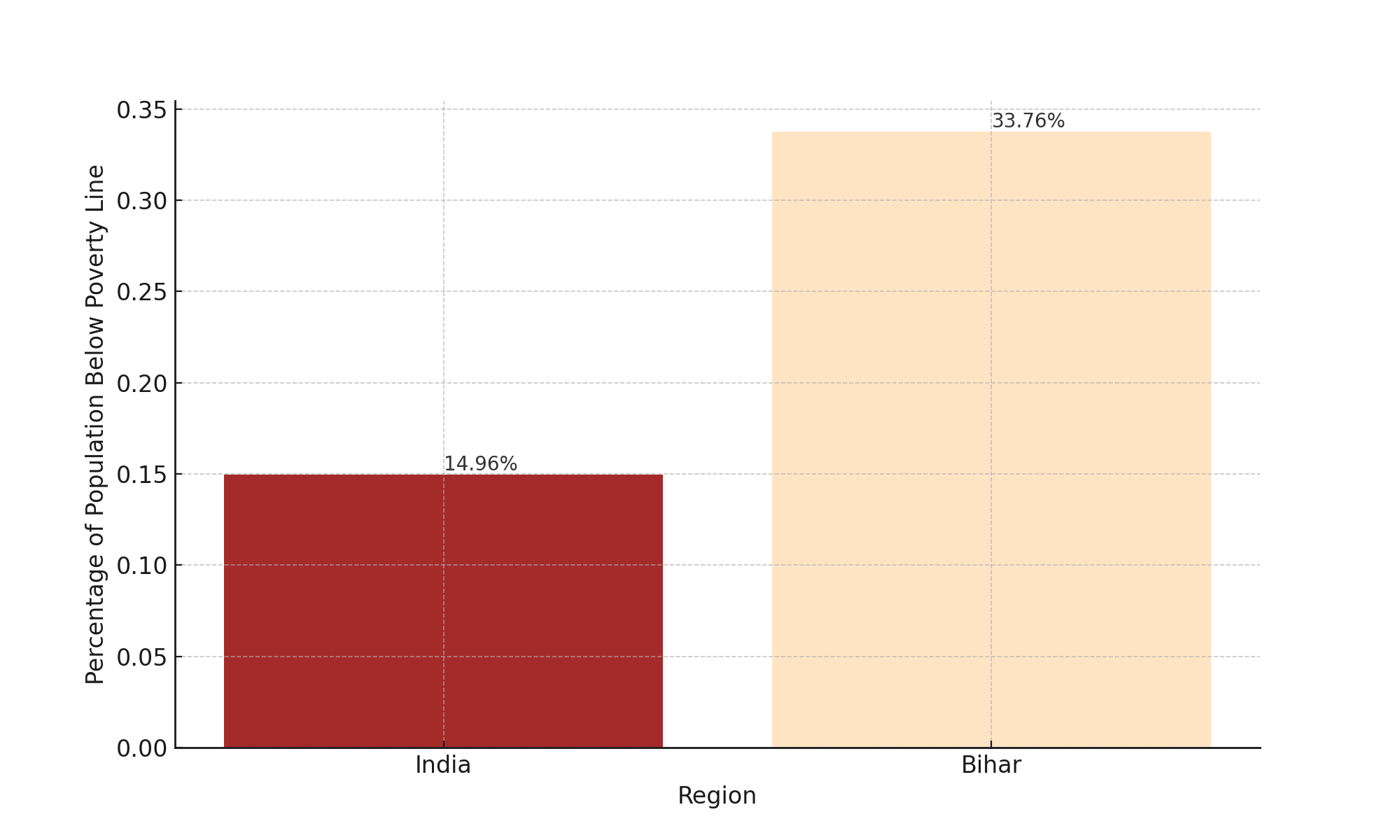Can We Eradicate Poverty Through FOSS?
Let me try to explain poverty, FOSS and its current state in India before I share my thoughts on the original question.
Poverty
Hunger, malnutrition, limited access to education and other basic services, social discrimination and exclusion, and a lack of participation in decision-making are symptoms of poverty. According to a United Nations report, more than 230 million people in India still live below the poverty line as of 2019/21. Essentially, this means that roughly one out of every seven people struggles to secure a sustainable livelihood. In the state of Bihar, this ratio is as high as one in three.

FOSS
Most of our daily activities are incomplete without using software. Soon, this 'most' will change to 'all'. Android, Chrome, Wikipedia, WhatsApp, Linux Operating System and government services like UPI are among the most widely used software. One common factor in all these software applications, serving as their backbone, is Free and Open Source Software (FOSS).

Free and Open Source Software is free to use and modify for building new software, without having to pay anyone, not even the authors or maintainers. Isn't that interesting and worth asking about? What is the economics behind building FOSS? I'll cover this in upcoming articles, but for this article, let's focus on the 'free to use' and 'free to modify' aspects.
💡 More than 85% of India’s Internet runs on FOSS.
If proprietary software were used instead of FOSS, I can’t imagine the cost to the Government, which would imply higher taxes for the public. See this article by Rahul De at IIM Bangalore (2009) where we can see how FOSS has benefited LIC, Gov. of Kerala and 18 more organizations. Also, learn more at The State of FOSS in India (2020).
Eradicating Poverty
The inability of 15% of the population to access basic human needs in a country that gained independence 75 years ago is a matter of shame for all past Governments. The poor education system, lack of women's participation in the workforce, and poor policies for starting up a new business are the major reasons behind this problem.
Enough criticism of the Government. Let me write about how entrepreneurs can contribute to reducing poverty.
In India, 80% of the engineers are not fit for the jobs and only 4% are eligible for top tech tech jobs. Big IT companies (TCS, Infosys, Wipro, HCL Tech etc) hire graduates from engineering colleges, mostly from tier-1 cities, regardless of CS/IT branch, train them for 3-6 months and onboard them to contribute to the company. This brings us to the first question:
Do engineering colleges in tier-1 cities teach something that can't be done outside the college?
The answer is No. While hiring, Big IT companies hire graduates with a basic cut-off of 60-65% marks and take aptitude tests. Following that they hire graduates and train them with tools and technology they use to give services to the client. What I'm trying to say is the engineering curriculum has very little to do with getting a job. Those students who are sincere and open enough to listen and get trained are employable. So my next question is:
Can entrepreneurs create job opportunities for engineering students in tier-II/III cities?
The answer is Yes. Entrepreneurs in smaller cities can also start companies, following the same model Big IT companies follow – hiring fresh graduates from nearby tier-II/III cities, training them, and getting the ball rolling. They won't have to pay as much as they would to engineers living in Bangalore, and Hyderabad, and employed at Big IT companies. Next, is my favourite question:
Can students from non-engineering backgrounds get jobs at IT companies?
To set some context - Currently, a very low number of students from mathematics backgrounds go to engineering college and the rest of the student groups are putting their efforts and time into Government jobs, which are less likely to be cracked. Which continues contributing to the poverty rate in India.

Coming back to answering the question – The answer is Yes. The average time a Government job aspirant puts on to get the job is more than 3 years. To start with even if we can convince a small percentage of aspirants to put time and effort into learning programming, and contributing to FOSS, through a well-designed curriculum, we could see success in reducing poverty. Kalvium is one of the good examples. Itupa partners with the university and provides a special curriculum to the students and most of them start getting internship opportunities at the end of the first year of their college. Nav Gurukul is another great initiative which provides guaranteed job courses in different states in India. They offer one-year residential course for students from under-served and diverse communities. Currently more than 1000 students are currently learning in 9 residential campus throughout the country.

But it's not that easy, the problem doesn't just lie in not having the option for affordable training or the opportunity to learn programming and contribute to FOSS. It's the mindset of students and their parents – Government jobs give people life-time security. No matter how well Government employees are performing. They'll have their job. I believe it'll change slowly over time. But that requires having the option to acquire skills which has demand in the market and entrepreneurs can fix it.
In the last decade, we have seen a boom in the IT service industry which has created more than 10 Lakh jobs and 47 Lakh new tech jobs to be created by 2027. Indian entrepreneurs have a huge opportunity there. Entrepreneurs have the unique opportunity to empower the young and talented, yet jobless students of tier-II/III cities. They can achieve this through several startup ideas:
- Training with High-Demand FOSS Tools and Technologies: Equip students with the skills needed in today's market by training them in Free and Open Source Software (FOSS) tools and technologies that are in high demand.
- Connecting with IT Companies: Establish a network that connects these skilled individuals with IT companies looking for fresh talent.
- Hiring for Their Own Companies: Employ these trained individuals in their own companies to provide IT services both in and outside India, offering a cost-effective alternative to services from tier-I cities.
- Solving Local Problems: Utilize web or mobile applications to address and solve local problems, thereby improving the community and providing practical experience.
By pursuing these ideas, entrepreneurs can't only contribute to reducing unemployment in tier-II/III cities but also foster a new wave of innovation and growth.
I'm open for feedback. You can choose to comment on this article or email me at vishal@fossunited.org.
Last updated on 29-01-2024 14:44:00 IST.